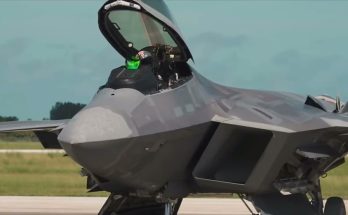The B-52 Stratofortress, a legendary heavy bomber that has been in service since the 1950s, is about to receive a major upgrade that will ensure it remains a formidable asset in the U.S. Air Force’s arsenal for decades to come. The U.S. military has unveiled a groundbreaking plan to power its aging fleet of B-52s with brand new engines, a move that promises to extend the aircraft’s operational life and improve its performance significantly. This bold innovation demonstrates the U.S. Air Force’s ability to adapt and modernize, ensuring that one of the most iconic bombers in history remains a vital part of the nation’s defense strategy.
The Need for New Engines
The B-52 has long been known for its versatility, carrying both nuclear and conventional payloads over long distances and performing a variety of missions. Despite its age, the aircraft’s adaptability and the robustness of its airframe have allowed it to remain in service for over 70 years. However, the B-52’s original engines—the Pratt & Whitney TF33 turbofans—have become increasingly difficult and expensive to maintain. These engines, which were designed in the 1960s, have limited efficiency and performance, and their reliability has degraded over time. As a result, the U.S. Air Force sought a solution to modernize the B-52 fleet without the astronomical cost of replacing the entire aircraft.
A Revolutionary Engine Upgrade
Enter the decision to replace the B-52’s old engines with brand new, state-of-the-art turbofan engines. In 2021, the U.S. Air Force awarded a contract to Rolls-Royce to provide new engines for the B-52, marking the beginning of a new era for this iconic bomber. The new engines are based on the proven Rolls-Royce F130 engine, which is a variant of the company’s successful AE 3007 turbofan engine. The F130 offers a significant increase in performance, efficiency, and reliability compared to the outdated TF33s.
One of the main advantages of the F130 engine is its fuel efficiency. The new engines are expected to reduce the B-52’s fuel consumption by as much as 30 percent, which will greatly improve the aircraft’s operational range and reduce its logistical footprint. This increased fuel efficiency is especially important as the B-52 is frequently tasked with long-range missions, requiring large amounts of fuel for extended flight times. With the F130 engines, the B-52 will be able to fly longer distances without the need for mid-air refueling, further enhancing its flexibility and operational readiness.
Increased Reliability and Performance
In addition to better fuel efficiency, the F130 engines are designed to be more reliable and easier to maintain than the aging TF33s. The new engines incorporate modern materials and advanced technologies that make them more durable and less prone to failure. This will reduce maintenance costs and extend the aircraft’s operational life. Given that the B-52 is expected to remain in service until at least 2050, the new engines will provide a crucial upgrade, allowing the bomber to operate at peak performance for decades to come.
The new engines also offer improved thrust, giving the B-52 greater speed and performance, especially in high-demand combat scenarios. The F130 engines can provide better thrust-to-weight ratios, which will enhance the B-52’s ability to carry heavier payloads and operate more effectively in a wider range of environments. This is particularly important as the U.S. Air Force continues to adapt to new threats and modernize its fleet of bombers.
A Cost-Effective Solution
Rather than replacing the B-52 entirely with a new bomber, which would cost billions of dollars and take years to fully implement, the U.S. Air Force’s decision to upgrade the engines is a cost-effective solution that breathes new life into the aircraft. By investing in the F130 engines, the Air Force can extend the B-52’s service life without having to overhaul the entire fleet. This decision is both practical and strategic, as the B-52 remains a key component of the U.S. military’s long-range strike capabilities.
Additionally, the modernization of the B-52 fleet with new engines allows the U.S. to allocate resources to other pressing defense needs while maintaining a powerful and reliable strategic bomber force. The decision to extend the life of the B-52 through engine upgrades also supports the U.S. Air Force’s vision of maintaining a flexible and multi-role bomber force that can adapt to evolving threats in an increasingly complex global security environment.
Conclusion
The U.S. Air Force’s decision to equip the aging B-52 Stratofortress with brand new Rolls-Royce F130 engines is a prime example of military innovation and resourcefulness. By investing in this cutting-edge technology, the Air Force has found a cost-effective way to modernize one of its most iconic aircraft and extend its service life for decades to come. The new engines will improve fuel efficiency, performance, and reliability, ensuring that the B-52 remains a formidable asset in the U.S. military’s arsenal, capable of carrying out critical missions well into the future. This modernization effort represents a strategic move that will enhance the U.S. Air Force’s global reach and maintain its air dominance in an ever-changing world.



